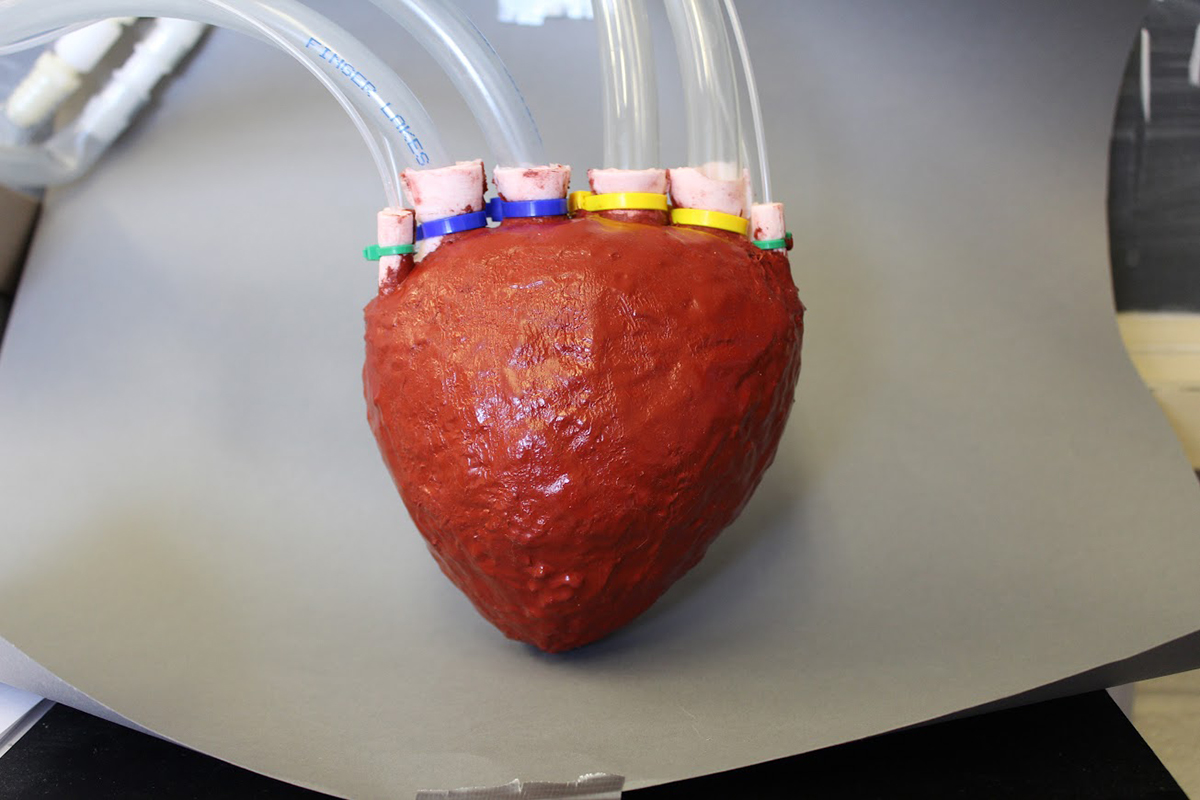Porous material holds promise for prosthetics, robots
By Krishna Ramanujan

Cornell researchers have developed a new lightweight and stretchable material with the consistency of memory foam that has potential for use in prosthetic body parts, artificial organs and soft robotics. The foam is unique because it can be formed and has connected pores that allow fluids to be pumped through it.
The polymer foam starts as a liquid that can be poured into a mold to create shapes, and because of the pathways for fluids, when air or liquid is pumped through it, the material moves and can change its length by 300 percent.
While applications for use inside the body require federal approval and testing, Cornell researchers are close to making prosthetic body parts with the so-called “elastomer foam.”
“We are currently pretty far along for making a prosthetic hand this way,” said Rob Shepherd, assistant professor of mechanical and aerospace engineering, and senior author of a paper appearing online and in an upcoming issue of the journal Advanced Materials. Benjamin Mac Murray, a graduate student in Shepherd’s lab, is the paper’s first author.
The porous channels are made by mixing salt with the rubbery elastomer when it’s still a liquid. Once the elastomer cures and hardens, the salt is removed. To seal an organ or prosthetic so air or fluid can be pumped through it without escaping, Shepherd and colleagues coat the outside with the same polymer but without the salt.
In the paper, the researchers demonstrated a pump they made into a heart, mimicking both shape and function.
The researchers used carbon fiber and silicone on the outside to fashion a structure that expands at different rates on the surface – to make a spherical shape into an egg shape, for example, that would hold its form when inflated.
“This paper was about exploring the effect of porosity on the actuator, but now we would like to make the foam actuators faster and with higher strength, so we can apply more force. We are also focusing on biocompatibility,” Shepherd said.
In a separate study published last month, Shepherd and colleagues developed an elastomer with a 3-D printer to create layers and duplicate muscles of an octopus tentacle, with comparable agility and freedom of movement as a real tentacle. The research was groundbreaking since until now 3-D printing methods could not directly print a device with as much agility and degree of freedom as the new method provides, Shepherd said.
The research was funded by the Air Force Office of Scientific Research, 3M and the National Science Foundation.
Media Contact
Get Cornell news delivered right to your inbox.
Subscribe